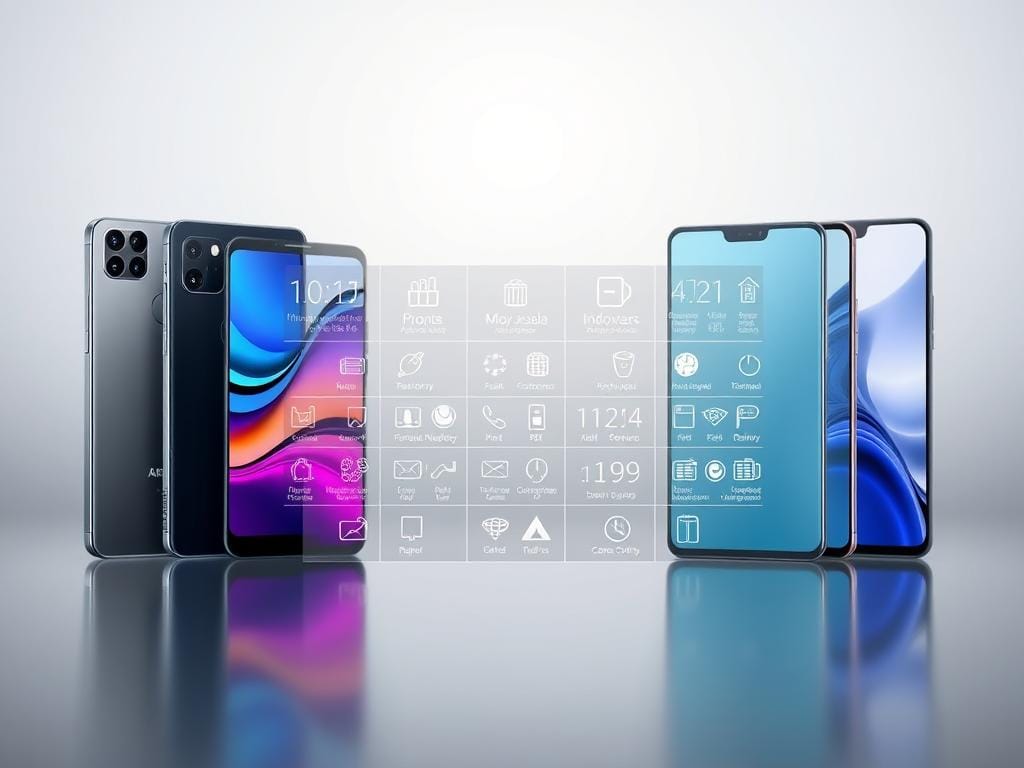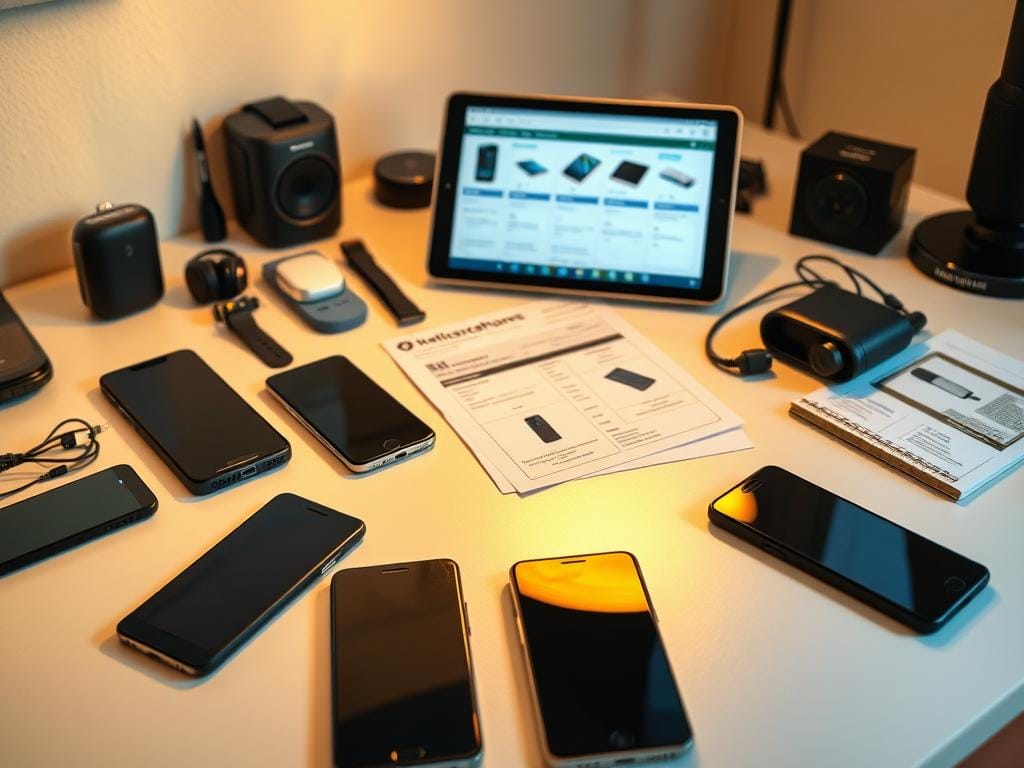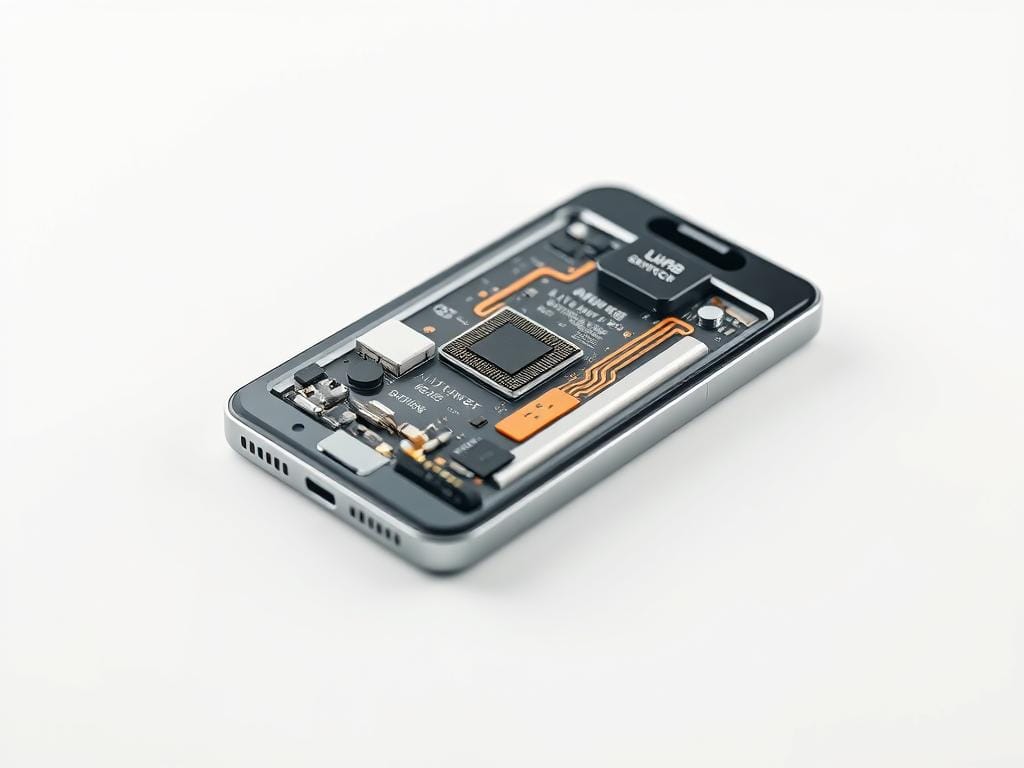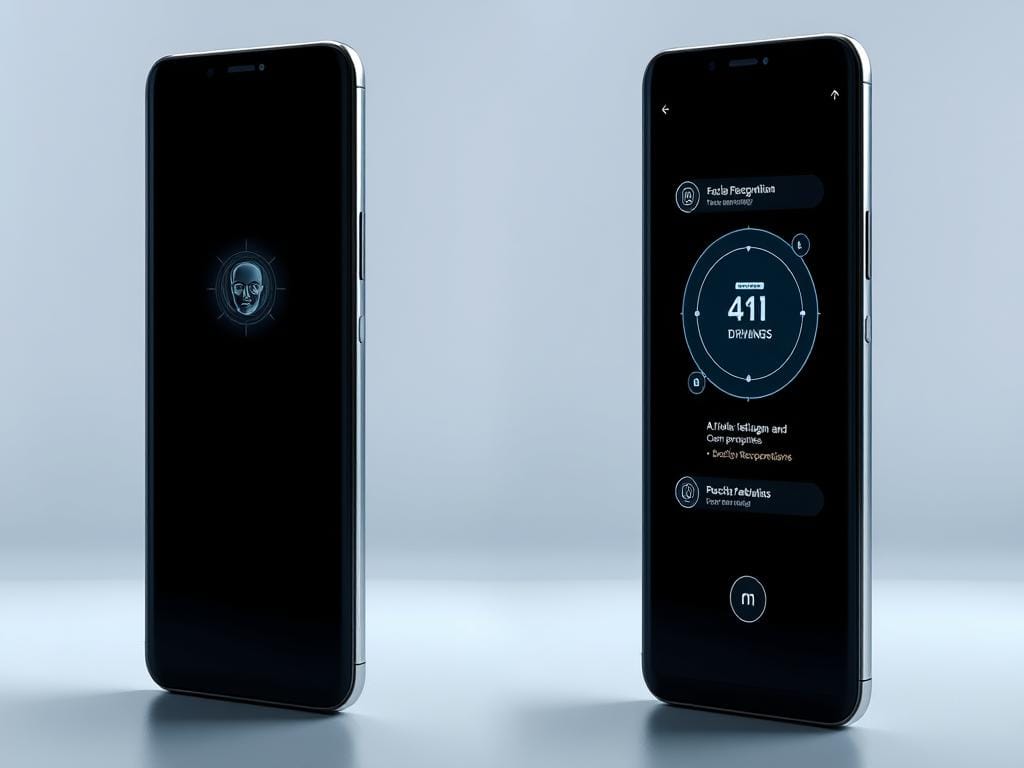Did you know the average person upgrades their phone every 2.5 years? By 2025, the smartphone market has evolved with more options than ever. Our Smartphone Buying Guide helps you navigate these choices to find the perfect device.
Finding the right smartphone in 2025 needs careful thought. New tech is changing the market fast. You must think about many things when choosing a phone.
This guide will make it easier for you. We’ll look at the latest trends, new tech, and important features. This way, you can choose a phone that fits your needs and budget.
Key Takeaways
- Understand the complex smartphone market dynamics in 2025
- Learn how to match device features with personal requirements
- Explore cutting-edge technologies across different price ranges
- Identify key performance metrics beyond marketing hype
- Develop a strategic approach to smartphone selection
Understanding Current Smartphone Market Trends
The smartphone world in 2025 is changing fast. It offers exciting new phones and tech. With more competition, companies are trying new things to stand out.
Latest Flagship Releases and Their Impact
This year’s top phones are changing how we compare smartphones. Big names have brought out amazing new models. These phones show off big tech leaps:
- Samsung Galaxy S25 series with enhanced AI capabilities
- Apple iPhone 16 lineup featuring revolutionary camera technologies
- Google Pixel 9 family with advanced computational photography
Market Leaders and Their Innovations
The 2025 smartphone market is very competitive and always changing. Companies are working hard to make their phones stand out. They’re focusing on:
- Artificial Intelligence Integration
- Advanced Camera Systems
- Immersive Display Technologies
Price Range Evolution in 2025
Prices for phones have changed a lot. Now, mid-range phones have features once only in high-end phones. This means more people can get great phone tech without spending a lot.
The smartphone market continues to prove that innovation knows no price boundaries.
Looking for the best phone in 2025? You’ll find many options. There’s something for everyone, no matter your budget.
Essential Features to Consider Before Purchase

Choosing the right smartphone in 2025 is all about comparing features. Today’s phones are packed with amazing tech that does more than just call and text. Knowing what matters most will help you pick a phone that fits your life and tech needs.
When looking at smartphones, think about these important points:
- Operating system compatibility
- Camera quality and versatility
- Battery life performance
- Processing power and speed
- Connectivity options
The smartphone market in 2025 is all about finding phones with smart features. Intelligent features are key to picking the best phone.
| Feature Category | Key Considerations | Importance Level |
|---|---|---|
| Camera Quality | Multi-lens systems, night mode, AI enhancement | High |
| Battery Life | Fast charging, wireless options, capacity | Critical |
| Operating System | User interface, security updates, app ecosystem | Medium |
Focus on features that meet your needs. Whether you love taking photos, work on your phone, or just use it for fun, knowing the basics will help you choose.
Smartphone Buying Guide: Key Decision Factors

Choosing the right smartphone means looking at many important things. Our guide helps you find the best phone for your needs and likes.
Three main things to think about are operating system, display, and processing power. Each one affects how you use your phone.
Operating System Preferences
Your choice of operating system changes how you use your phone. iOS and Android are the top choices, each with its own feel:
- iOS makes using Apple products easy
- Android lets you customize a lot
- Both have strong security features
Display Technology and Size Options
The size and type of display matter a lot. Phones now come in sizes from 5.5 to 6.7 inches, fitting different tastes.
OLED and AMOLED screens are common now. They give:
- Bright colors
- Deep contrasts
- Good battery life
Processing Power and Performance Metrics
The processor is the brain of your phone. New chips from Qualcomm, Apple, and Google make phones fast and efficient. Think about:
- How many cores it has
- Its graphics power
- How much battery it uses
Pro tip: Pick a processor that fits how you use your phone, whether for games, work, or just browsing.
Camera Systems and Photography Capabilities
In 2025, choosing a mobile phone often depends on its camera. Smartphone makers have made big strides in mobile photography. They’ve created advanced camera systems that let you take amazing photos with just your phone.
Today’s smartphones have complex camera setups. They turn simple moments into stunning photos. Key innovations include:
- Multiple lens configurations including wide, ultra-wide, and telephoto options
- AI-powered computational photography
- Enhanced low-light performance
- Advanced depth sensing and portrait modes
Artificial intelligence has greatly boosted camera abilities. Intelligent scene detection adjusts settings for the best photos. It also removes old photography limits with advanced editing.
When looking at camera quality, consider these:
- Megapixel count and sensor size
- Low-light performance
- Optical and digital zoom capabilities
- Video recording features
Whether you’re a pro or just starting, smartphones can take incredible photos. This makes choosing a phone more thrilling than ever. The camera is now the key feature for those looking for the best mobile tech.
Battery Life and Charging Technologies

Smartphone battery performance is key when buying a new phone. People want devices that last all day, every day. This makes checking battery life very important.
When looking for a new phone, knowing about battery life is smart. Today’s top phones have big batteries. They meet most people’s daily power needs.
Battery Capacity Considerations
Battery size is measured in milliamp-hours (mAh). Phones now range from 3,500 to 5,500 mAh. Here are some things to think about:
- Screen size affects battery use
- How efficient the processor is matters
- 5G can use more battery power
Fast Charging Standards
Today’s phones can charge quickly. This means less time waiting for your phone to be ready. Different brands have their own fast charging ways:
- USB Power Delivery (PD) – a common standard
- Unique fast charging from each brand
- Charging speeds range from 18W to 100W+
Wireless Charging Options
Wireless charging has become a common feature. Qi-certified wireless charging is faster and works with more devices.
- Standard wireless charging (5-15W)
- Fast wireless charging (15-50W)
- Reverse wireless charging for charging accessories
Knowing about these battery technologies helps you choose the right phone. It ensures it meets your power needs.
AI Features and Smart Capabilities

Artificial Intelligence has changed how we compare smartphones in 2025. It brings new smart features to our mobile phones. Now, smartphones do more than just call and text.
There are many exciting AI features in today’s smartphones:
- Advanced voice assistants that understand you
- Real-time language translation in many dialects
- Intelligent camera modes that predict and improve scenes
- Personalized experiences thanks to machine learning
On-device AI processing has changed how phones work. Privacy-conscious users like phones that can handle AI tasks on their own. This means they don’t need to rely on the cloud.
| AI Capability | Performance Impact | User Benefit |
|---|---|---|
| Contextual Voice Assistant | High Accuracy | Personalized Interactions |
| Predictive Camera Mode | Enhanced Image Quality | Professional-Level Photography |
| Language Translation | Real-Time Processing | Instant Communication |
When picking a smartphone in 2025, look at these AI features closely. They mark the future of mobile tech. They bring intelligence and interaction to a new level.
Storage Options and Expandability
Choosing the right phone storage capacity is key in any smartphone guide. Users now use their phones for work and fun. So, storage options are more critical than ever.
In 2025, phone storage has grown to meet many needs. We’ll look at storage solutions to boost your device’s power.
Internal Storage Choices
Today’s phones offer various storage sizes:
- Entry-level devices: 128GB
- Mid-range smartphones: 256GB
- High-end models: Up to 1TB
Cloud Storage Integration
Cloud storage is vital in phone storage advice. It lets users add more storage easily through cloud services.
| Cloud Service | Free Storage | Additional Cost |
|---|---|---|
| Google Drive | 15 GB | $1.99/month for 100 GB |
| iCloud | 5 GB | $0.99/month for 50 GB |
| Dropbox | 2 GB | $9.99/month for 2 TB |
External Storage Solutions
Though rare, some phones let you add storage with microSD cards. Think about your storage needs when picking a phone.
- Check manufacturer specs
- Look at cloud options
- Think about your storage needs
Our guide suggests picking a phone with the right storage for you. Whether you’re casual or a content maker, there’s a solution for you.
Build Quality and Durability Standards
When you’re looking at smartphones, durability is key. It can greatly affect how you use your device. Today’s phones are built to last, withstanding daily use.
Top brands use strong materials to make phones last longer. They aim to keep phones looking good while being tough.
- Advanced glass technologies like Gorilla Glass Victus 2 provide superior scratch and drop protection
- Titanium and ceramic frames offer enhanced structural integrity
- Improved water and dust resistance with IP68 ratings
Brand reputation is important for phone durability. Top makers spend a lot on research to make phones that last. They want phones that perform well and can handle tough conditions.
When checking a phone’s durability, consider these:
- Material quality and construction
- Water and dust resistance ratings
- Manufacturer’s warranty and support
- Independent durability test results
Don’t just look at how a phone looks. Choose devices that are built to last. A well-made phone is a better investment and gives you peace of mind.
Conclusion
Choosing a smartphone in 2025 can be tough with so many choices. Our guide helps you pick the right phone, no matter your budget or needs. It covers everything from top-of-the-line phones to affordable options.
Whether you want the best camera, longest battery, or smartest AI, we’ve got you covered. Each phone offers something special to improve your digital life. It’s all about finding the right mix of tech and features for you.
Smartphones change fast, so think about what you’ll need in the future. Don’t just look at what’s new; think about what’s useful for you. Choose a phone that fits your life and needs.
Finding the perfect phone is a personal journey. Our guide prepares you to pick a phone that’s both high-tech and affordable. Take your time to compare and test phones until you find the one that’s just right for you.
🚀 Unleash Your Printing Freedom Today! 🌟
Tired of being tethered to your desk? Discover the Top 5 Best Portable Wireless Printers that will revolutionize the way you print on-the-go! Whether you’re a busy professional, a student, or a creative on the move, these compact powerhouses combine convenience and quality like never before.
Don’t miss out on this opportunity to enhance your productivity and take your printing capabilities anywhere. Read our latest blog post now to find the perfect portable printer that suits your lifestyle!
👉 Click here to dive into our expert picks and transform your printing experience today! 📲✨


